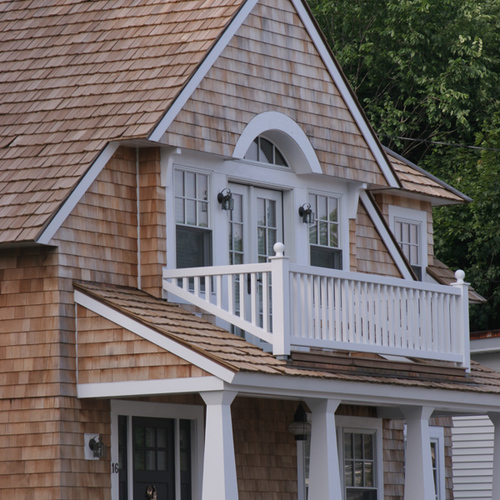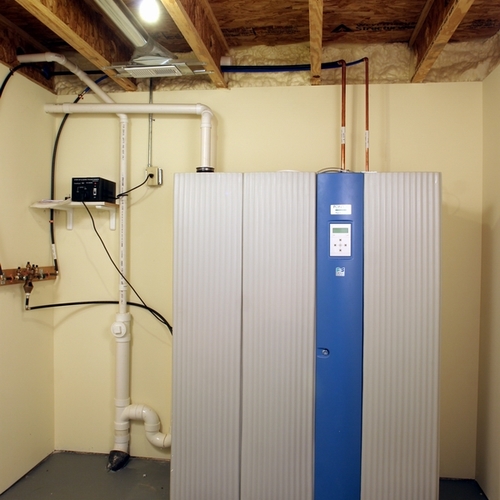
This article is only available to GBA Prime Members
Sign up for a free trial and get instant access to this article as well as GBA’s complete library of premium articles and construction details.
Start Free TrialAlready a member? Log in
The complete source for building, designing, and remodeling green homes

Sign up for a free trial and get instant access to this article as well as GBA’s complete library of premium articles and construction details.
Start Free TrialAlready a member? Log in
Get building science and energy efficiency advice, plus special offers, in your inbox.




Do you really want to delete the list, ?
This won't delete the articles you've saved, just the list.
This feature has been temporarily disabled during the beta site preview.
9 Comments
Treating cut edges on Zip?
Since, as I understand it, the Huber Zip product is a lamination of a woven WRB onto a specialized OSB panel. As that makes it a "topical treatment" in my mind, what is recommended treatment for cut edges of panels? Such as a lap joint at the building corner, window & door RO's, service penetrations. Is the standard practice to tape and cut edge to seal it?
Response to Albert Rooks
Albert,
According to the installation instructions provided by Huber, there is no special treatment required for panel edges that have been cut. Here is a link to the web page with installation instructions:
http://www.zipsystem.com/installation/wall-sheathing.aspx
Some updated information is needed
SOLITEX Mento 1000 and Mento Plus WRBs can be fairly described as "waterproof". Please see spec sheet here: http://www.foursevenfive.com/spec/SOLITEX%20MENTO%201000%20Spec.pdf
With taped seams they can also provide Passive House level airtightness - while being quite vapor open. See a description of the membrane here: http://www.foursevenfive.com/index.php?main_page=page&id=15&p=533
The SOLITEX Mento membranes' waterproof performance are also not degraded by building site contaminants or wood siding tannins.
The SOlTEX Mento membranes offer an affordable high-performance approach. And they are available across the US from http://www.foursevenfive.com.
I hope you can update the information provided in this WRB posting. Let us know if you have any further questions.
Sincerely,
Ken
Thanks for the link Martin
I read the short instructions. Since this is a whole wall WRB, and Huber requires an 1/8" gap where 4' edges meet, the WRB system is heavily dependent on the tape joint, and the tapes bond in order to stop the weather. For every panel there is a 12' tape joint that needs to last the life of the building. These joints don't even have the benefit of gravity lapping (is that the right term?).
It does make me appreciate a good lapped membrane since they can be laid in a way that even if a tape joint failed, proper lapping would keep the water out.
Not that I'd even admit that tape fails :) (Just joking... Everything fails at some point.)
Response to Ken Levenson
Ken,
The link to the spec sheet doesn't really tell me how Solitex Mento behaves in a wall without a rainscreen gap. If the membrane is pinched between lap siding and sheathing -- or perhaps panel siding and sheathing -- without a drainage gap, and if I subjected the wall to several hours of exposure to a water hose, would the sheathing get wet?
I don't know the answer. But I know that if the test is performed with a plastic housewrap or asphalt felt, the sheathing will get wet.
Response to Martin Holladay
Hi Martin,
I'll admit to not having done that particular test - however, my own anecdotal test was driving on the highway for 4 hours at 70mph in a driving hurricane like rainstorm (the whole way) with a large package wrapped in SOLITEX Mento 1000 WRB on the roof of the car. Upon arriving in Washington DC, we nervously removed the WRB, finding much to our relief, a bone dry back to the WRB and bone dry contents within. The membrane is waterproof. (And tannins don't degrade it.)
Response to Ken Levenson
Ken,
I think that some plastic housewraps (and 30-pound asphalt felt) would probably pass your "Christmas present on the roof of a car" test.
The issue seems to be fasteners and sandwiching. Once you staple or fasten a membrane to a wall, and pinch it between the siding and the sheathing, most membranes leak. The solution is to include an air gap between the WRB and the back of the siding.
It's a little like an old-fashioned single-wall tent. The tent won't leak until you touch it from the inside with your finger. Then your finger gets wet.
Response to Martin Holladay
There is no "tent effect" with the SOLITEX. It is a different animal. With the typical housewraps the surface tension of the water is broken when you touch it with finger or other contaminents and it tents through the micro-tears. The SOLITEX is a solid membrane - the vapor permeability is at the molecular level.
Agreed that penetrations need to be self-sealing/under positive pressure to maintain waterproofness - if you have an exposed tear it is going to leak.
Please take a look at this brochure: http://www.foursevenfive.com/spec/SOLITEX%20MENTO%20System%20brochure%20475.pdf
I'll also try to track down further documentation and will follow-up.
Code needs to be updated. I'd much rather have a building without 2 layers of Tyvek or 15# building paper if I could tape the seams (with an acrylic tape) of the plywood/properly flash the penetrations to control air and use a rainscreen. Way better assembly than next-to-worthless junk like Tyvek or modern 15# building paper that we see everywhere. Just skip the worthless Tyvek, spend the money on air sealing and use a rainscreen - probably deliver homes at almost same cost but vastly better performance/longevity.
Log in or become a member to post a comment.
Sign up Log in